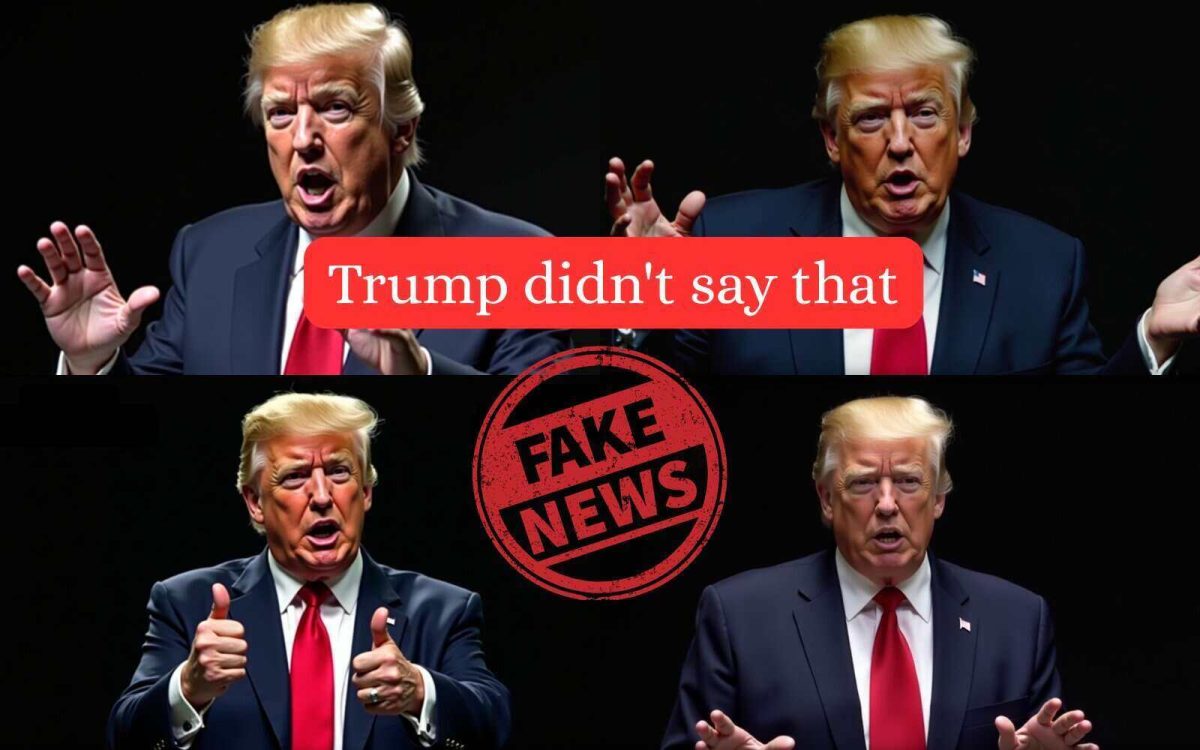After the devastating April 22, 2025, Pahalgam terror attack, where 26 innocent civilians were killed, a forged video of Donald Trump, former President of the United States of America, is being shared on social media platforms. This deepfake video deceptively shows Trump giving a stern threat to Pakistan, saying he would “destroy Pakistan” if it attacked India. The video has been discredited as a deepfake, which is an increasing cause for concern regarding the abuse of artificial intelligence in disseminating false information.

The Deepfake Video: Exposing the Forgery
The 9-second video features Trump apparently saying, “If Pakistan attacks India, I will not sit idle. I will destroy Pakistan. Modi is my friend, and I love the people of India.” But fact-checkers at Newschecker reviewed the video and found it to be AI-manipulated. The background of the video states “The Economic Club New York,” and after conducting research, it was learned that the footage was taken from a 2016 gathering when Trump spoke about economic policies, not global relations. The original video can be accessed on C-SPAN, proving that the viral clip is a manipulated version of Trump’s previous speech.
The Pahalgam Terror Attack: A Catalyst for Misinformation
The Pahalgam attack, which was perpetrated by militants in Jammu and Kashmir, killed 26 civilians, mostly Hindu tourists. The Resistance Front (TRF), a splinter group of the Pakistan-based Lashkar-e-Taiba, initially took responsibility but later withdrew it. The attack has escalated tensions between India and Pakistan, triggering a rise in misinformation and propaganda on social media. The dissemination of deepfake videos, such as the one showing Trump, makes matters worse by provoking rage and possibly instigating further violence.
The Role of AI in Spreading Misinformation
The spread of deepfake technology represents an important challenge for the digital era. Videos generated through AI can make people say or do things they never said or did, which makes it increasingly difficult to distinguish between fact and fiction. During geopolitical conflicts, for example, between India and Pakistan, deepfakes can be exploited to influence public opinion and destabilize nations.
Resemble.ai, an advanced AI detection tool, analyzed the viral clip and confirmed that the audio was artificially generated.

The Role of Media Literacy and Fact-Checking
With the advancements in deepfake technology, media literacy is essential. People should be trained to critically analyze the material that they consume and share. Fact-checking entities are crucial in knocking down misinformation and establishing correct context. Websites such as Newschecker serve as useful platforms in identifying and taking down deepfakes, offering assurance of the authenticity of information in the public domain.
Tech Communities’ Role
For Indian tech firms and professionals, the spread of deepfakes is both an opportunity and a challenge. It is imperative to work on and deploy technologies that can identify and hinder the dissemination of faked media. Tech firms, governments, and civil society must cooperate to establish reliable systems for authenticating digital content.
Numone Technologies: Promoting Ethical Use of AI
At Numone Technologies, we are dedicated to fighting the abuse of AI and upholding ethical practices in the development of technology. We are committed to harnessing AI for the betterment of society and are part of active initiatives that work to identify and stop the dissemination of deepfakes. Our mission is to develop tools and frameworks that maintain the integrity of data and safeguard populations from the negative impact of misinformation.
Conclusion: Navigating the Digital Information Landscape
The dissemination of the deepfake video of Donald Trump is a stark reminder of the problems that can be caused by AI-made misinformation. In a time when digital content is so easily manipulable, it is up to people, tech communities, and policymakers alike to collaborate in creating a media landscape based on truth and accountability. By promoting media literacy, fact-checking, and the development of new detection technologies, we can all protect public discourse from the dangers of deepfakes and misinformation.


Leave a Reply